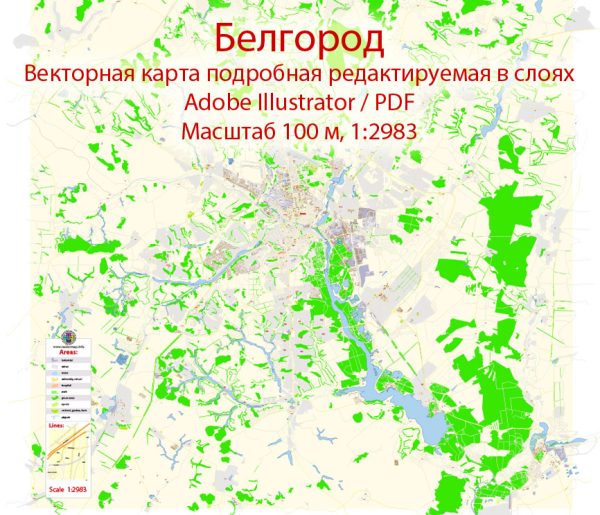A general overview of the political and economic history of the Belgorod region in Russia.
Vectormap.Net provide you with the most accurate and up-to-date vector maps in Adobe Illustrator, PDF and other formats, designed for editing and printing. Please read the vector map descriptions carefully.
Political History:
1. Early History:
- Belgorod’s history dates back to the 16th century when it was founded as a fortress on the southern borders of the Russian state.
- It played a significant role in defending the territory against various invasions, including those by Crimean Tatars.
2. Imperial Russia:
- Belgorod continued to be a military stronghold during the imperial era, serving as a fortress and a center for military administration.
3. Soviet Era:
- The region underwent significant changes during the Soviet period, experiencing industrialization and agricultural collectivization.
- Belgorod played a role in World War II as a key location during the Battle of Kursk, one of the largest tank battles in history.
4. Post-Soviet Period:
- With the dissolution of the Soviet Union in 1991, Belgorod became part of the Russian Federation.
- The region faced challenges associated with the transition from a planned economy to a market-oriented one.
5. Modern Era:
- In the 21st century, Belgorod has been a part of the larger political and economic developments in Russia.
- It has contributed to Russia’s agricultural sector, being known for its fertile soil and agricultural production.
Economic History:
1. Agricultural Heritage:
- The region has a strong agricultural tradition, with fertile black soil supporting the cultivation of crops such as wheat, sunflower, and sugar beets.
2. Industrialization:
- During the Soviet era, Belgorod underwent industrialization, with the development of manufacturing and heavy industry.
- The city became a center for machinery, metalworking, and chemical industries.
3. Post-Soviet Transition:
- Like many other regions in Russia, Belgorod faced economic challenges during the transition to a market economy.
- The restructuring of industries and privatization efforts were part of this economic transformation.
4. Agriculture and Agribusiness:
- Agriculture remained a crucial aspect of Belgorod’s economy, and in the post-Soviet era, there was an emphasis on modernizing and improving efficiency in the agricultural sector.
- The region became known for its agribusiness, including poultry and livestock farming.
5. Economic Diversification:
- Efforts were made to diversify the economy beyond agriculture, with a focus on attracting investment in various sectors, including technology and services.
For the most current information, I recommend checking recent sources and official publications related to the region.


 Author: Kirill Shrayber, Ph.D.
Author: Kirill Shrayber, Ph.D.